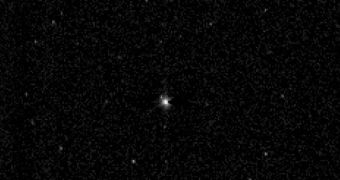The New Horizons spacecraft successfully crossed Neptune's orbit and was well on track to reach Pluto on July 14, 2015, scientists with NASA (the National Aeronautics and Space Administration in the US) announced yesterday.
When finally reaching its destination, the New Horizons spacecraft will officially become the first probe ever to fly past Pluto and its moons, and to have a close look at the outskirts of the solar system from a front row seat.
In a press release on its website, NASA details that this spacecraft launched back in January 2006. In order to reach Neptune' orbit, it had to cover a distance of 2.75 billion miles (approximately 4.42 billion kilometers).
The spacecraft traveled over this distance in a record eight years and eight months. Thus, it crossed Neptune's orbit this past Monday, at 10:04 p.m. EDT. At that time, the planet sat at a distance of 2.48 billion miles (3.99 billion kilometers) from New Horizons.
This NASA spacecraft might have its heart set on exploring Pluto and its moons, but this does not mean that it is one to pass up an opportunity to check out other planets as well, if and when given the chance.
Thus, while on its way to traversing Neptune's orbit, New Horizons managed to snap some photos of this planet. One of the images obtained in this manner is available next to this article, and it shows Neptune and accompanying moon Triton.
The picture was obtained just a few weeks ago, on July 10, from a distance of about 2.45 billion miles (3.96 billion kilometers). To put things into perspective, it need be said that this distance is the equivalent of over 26 times the distance between the Earth and sun.
NASA's New Horizons spacecraft crossed Neptune's orbit on the very same day that marked the 25th anniversary of Voyager 2' encounter with the very same planet. Granted, Voyager 2 got closer to Neptune in 1989 than New Horizons did this past Monday, but this does not make the younger spacecraft's achievement any less impressive.
Commenting on the New Horizons space mission, researcher Ralph McNutt with the Johns Hopkins University Applied Physics Laboratory in Laurel, Maryland, said, “We don’t know exactly what we’ll see, but we know from decades of experience in first-time exploration of new planets that we will be very surprised.”
“The U.S. has led the exploration of the planets and space to a degree no other nation has, and continues to do so with New Horizons. We’re incredibly proud that New Horizons represents the nation again as NASA breaks records with its newest, farthest and very capable planetary exploration spacecraft,” added Alan Stern with the Southwest Research Institute in Boulder, Colorado.

 14 DAY TRIAL //
14 DAY TRIAL //